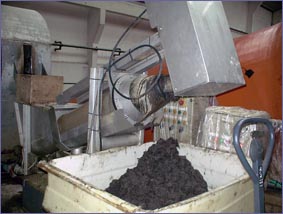

 |
|
|
|||||||||
|
|
|||||||||
|
|
 |

Implementation of the hair save process |
Hair Save Process
Conventional un-hairing/liming processes rely on the application of sodium sulphide or a mixture of sodium sulphide and sodium hydro-sulphide to degrade the keratin. There are essentially two types of process for un-hairing; the more traditional is the 'hair burn' process in which the aim is to degrade all of the hair, the other is the 'hair save' process in which the aim is to degrade the hair root only thus releasing the hair shaft which is removed by screening. Complete removal of hair and hair residue is an important issue for the tanner. Even small amounts of hair root remaining in the hair follicle |
 |
 |
can result in the downgrading of the leather produced with consequent financial implications for the tanner. The implementation of a hair save process reduces considerably the pollution discharged and improves the quality of the overall process.
W2O can support tanneries in the implementation of the cleaner hair save process with process design including the selection of appropriate equipment.
Clean Tech. References
Design, up-scaling and start-up of a chrome precipitation and sludge de-watering plant in Igualada, Spain. |
 |
 |
 |
|||||||||||